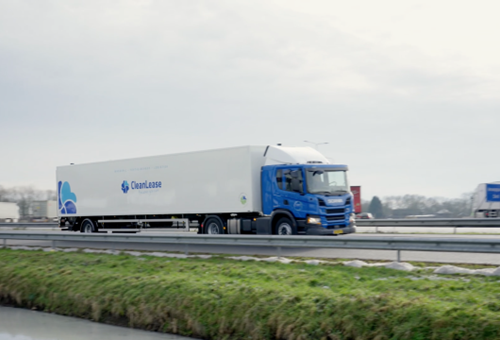As changes in the world around us become frequent, these types of questions are increasingly posed. A route planning system like OptiFlow not only enhances operational transport planning but also addresses these tactical planning issues.
VUCA is an English acronym often used to describe the changing world around us:
- Volatile
- Uncertain
- Complex
- Ambiguous
An example to consider. During the pandemic, online stores saw a surge in orders but now have to take a step back. Or manufacturing companies that recently faced a shortage of parts but are now grappling with overstocked warehouses. Due to climate change, inflation, rising interest rates, and geopolitical tensions, we are likely to be in this VUCA world for some time.

Scaling Transport Capacity Up or Down
These effects are felt in our transport operations. The demand for road transport is continually changing, meaning we need to frequently scale our capacity up or down. Do we manage the needed flexibility with our vehicles and drivers, or should we outsource some to subcontractors?
Simultaneously, the increasing number of low and zero-emission zones and the rise of electric transport present new challenges. Can we still reach our customers in the city centre, or should we switch to other modes of transport on the outskirts? Is our existing distribution network sufficient, or should we open additional depots due to the limited range of electric vehicles?
Developing and Calculating Scenarios
Previously, it was enough to evaluate the distribution network or regular route schedule annually and draft investment plans. Today, we need to adjust more often and more quickly. This can be done by creating and calculating various future scenarios.
- What is the impact of expanding my transport fleet?
- How many trucks will be idle if order numbers drop by 10%?
- What happens if I allocate this postal area to that depot?
- Are there benefits to using a hub for city logistics?
An advanced route planning system like OptiFlow provides answers to these tactical planning issues.

CleanLease Enhances Tactical Planning
CleanLease is one of the companies using OptiFlow for tactical transport planning. This company rents and cleans textiles for hospitals, care institutions, and holiday parks. From 27 locations in the Netherlands and Belgium, over 250 trucks depart daily to deliver clean textiles and collect dirty ones.
Until 2021, CleanLease used a fixed route schedule with set delivery times within certain time limits. “It’s convenient, but there’s an inherent risk. You might get stuck doing the same thing for years. Seeing potential planning improvements, we implemented OptiFlow,” says Arnoud Clement, project manager of supply chain & transport at CleanLease.
Improvements of 10 to 15 Percent
Before rolling out OptiFlow, CleanLease anticipated a 5% improvement. Now, the actual improvement ranges from 10 to 15%. “When you input the right data, you get better routes. By tweaking the time limits slightly, we drive fewer kilometres. In one particular instance, we initially had three routes, while OptiFlow suggested we could combine them into one.”
Currently, CleanLease recalculates the route schedule twice a year. Clement expects this to increase in the future. “From 2025, we’ll face zero-emission zones at multiple locations, prompting different tactical decisions. With OptiFlow, we can make well-informed decisions now and in the future.”
